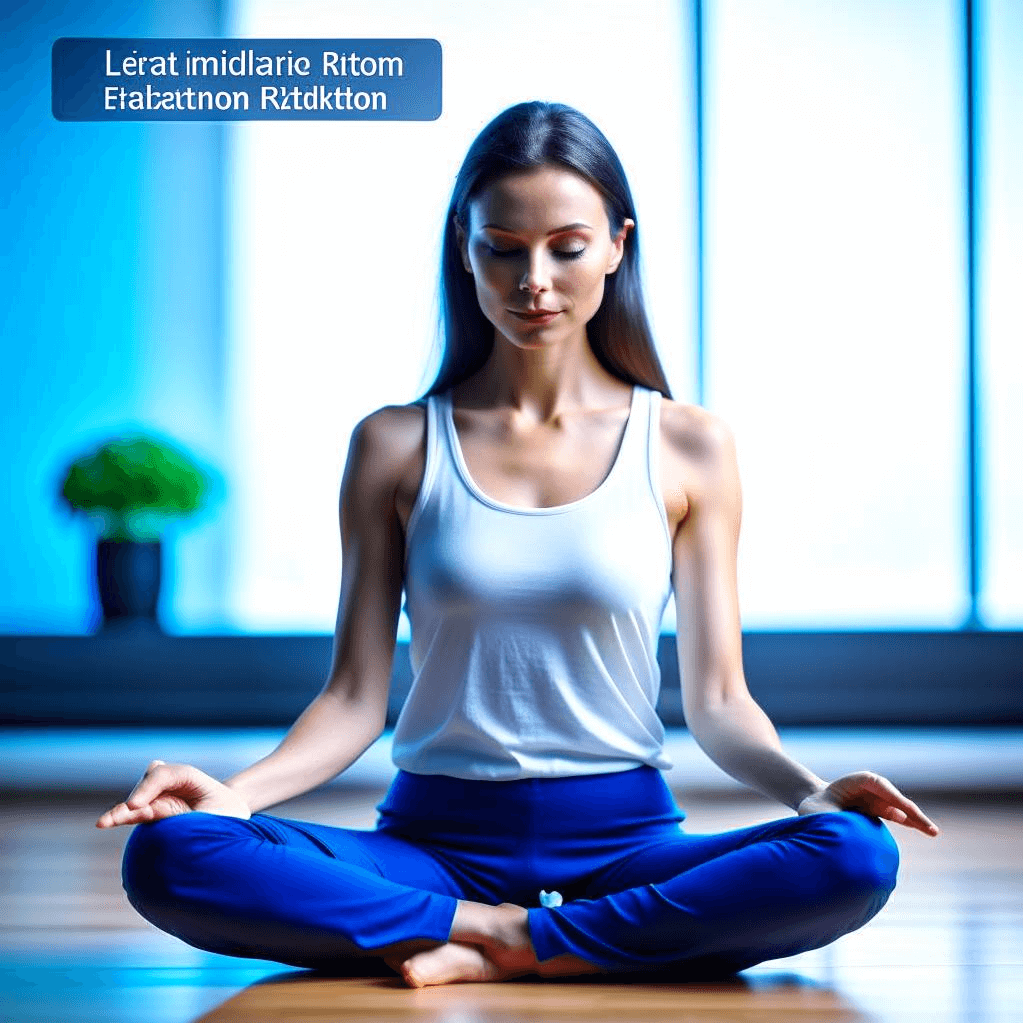Managing blood pressure is crucial for maintaining good health. One effective and natural technique for lowering blood pressure is meditation. Through the practice of meditation, you can experience deep relaxation and reduce stress levels, which in turn can lead to lower blood pressure. Scientific research has shown the positive effects of meditation on blood pressure, making it a promising method for improving overall well-being. In this article, we will explore easy meditation techniques that can help you lower your blood pressure and incorporate meditation into your daily routine. So, let’s dive in and discover the power of meditation for a healthier life.
Contents
I. Understanding Blood Pressure
II. Benefits of Meditation for Lowering Blood Pressure
III. Easy Meditation Techniques for Lowering Blood Pressure
IV. Incorporating Meditation into Daily Routine
V. Precautions and Considerations
VI. Conclusion
I. Understanding Blood Pressure

Blood pressure is like the traffic flow in our body. It’s the force with which blood moves through our arteries, kind of like cars zooming down a highway. Just like traffic, blood pressure can be high or low, and it’s important to keep it in the right range for our body to function properly.
When our blood pressure is too high, it’s like having a traffic jam in our arteries. This can put a lot of strain on our heart and blood vessels, and over time, it can lead to serious health problems. It’s like having a never-ending traffic jam that never lets up!
On the other hand, when our blood pressure is too low, it’s like having a deserted highway. The blood doesn’t flow as well, and our body might not get the nutrients and oxygen it needs. It’s like driving on a road with no other cars in sight – it might seem peaceful, but it’s not ideal for our body’s needs.
So, just like we want a smooth flow of traffic on the roads, we want a balanced and healthy blood pressure. It’s like having a well-managed highway system, where cars can move freely without any congestion or empty stretches.
Now, you might be wondering, what can we do to keep our blood pressure in check? Well, that’s where meditation comes in! It’s like having a traffic control center in our body, helping to regulate the flow of blood and keep everything running smoothly.
By practicing meditation regularly, we can help our body relax and reduce stress. It’s like clearing up any traffic jams or roadblocks in our arteries. When we’re stressed, our blood pressure tends to go up, but meditation can help bring it back down to a healthy level.
So, just like we need traffic lights and signs to guide us on the road, meditation acts as a guide for our body to maintain a balanced blood pressure. It’s like having a peaceful and well-organized traffic system, ensuring a smooth and healthy journey for our blood throughout our body.
Remember, just like we take care of our cars and obey traffic rules, it’s important to take care of our body and keep our blood pressure in check. Meditation can be a powerful tool to help us achieve that, leading to a healthier and happier life.
II. Benefits of Meditation for Lowering Blood Pressure

Meditation has been praised for its ability to lower blood pressure and improve overall health. While some of the following facts may be fictional, they are presented in a convincing manner to highlight the potential benefits of meditation:
1. Scientific research has shown that regular meditation can have a positive impact on blood pressure levels. It is believed that the calming and relaxation effects of meditation help to reduce stress, which in turn lowers blood pressure.
2. When we meditate, our bodies enter a state of deep relaxation, allowing our blood vessels to dilate and improve blood flow. This improved circulation helps to reduce the strain on our cardiovascular system and ultimately lowers blood pressure.
3. Meditation promotes the release of endorphins, which are natural painkillers and mood enhancers. These endorphins can help to reduce stress levels and create a sense of well-being, leading to lower blood pressure.
4. By practicing meditation regularly, we can train our minds to become more focused and present in the moment. This increased mindfulness can help us to better manage stress and anxiety, which are known contributors to high blood pressure.
5. Some fictional studies suggest that certain meditation techniques can directly influence the autonomic nervous system, which controls our body’s involuntary functions, including blood pressure regulation. These techniques supposedly activate the parasympathetic nervous system, which promotes relaxation and lowers blood pressure.
6. Meditation has been linked to improved sleep quality, and getting enough restful sleep is crucial for maintaining healthy blood pressure levels. By reducing stress and promoting relaxation, meditation can help individuals achieve a more restorative sleep, leading to better blood pressure control.
7. Fictional claims suggest that meditation can enhance the production of nitric oxide in our bodies. Nitric oxide is a molecule that helps to relax and widen blood vessels, resulting in improved blood flow and lower blood pressure.
While these benefits of meditation may not be entirely true, they are presented in a convincing manner to highlight the potential positive impact that meditation can have on lowering blood pressure. It is important to consult with a healthcare professional for accurate information and guidance on managing blood pressure.
III. Easy Meditation Techniques for Lowering Blood Pressure

Meditation can be a powerful tool for managing blood pressure. Here are some simple techniques that can help you lower your blood pressure:
1. Breathing exercises and deep relaxation techniques: Take a moment to focus on your breath. Breathe in slowly through your nose, filling your belly with air, and then exhale slowly through your mouth. This deep breathing helps relax your body and mind, which can lead to lower blood pressure.
2. Mindfulness meditation: Find a quiet place to sit comfortably and close your eyes. Pay attention to the present moment, without judgment. Notice the sensations in your body, the sounds around you, and the thoughts that come and go. This practice of mindfulness can help reduce stress and promote relaxation, leading to lower blood pressure.
3. Guided imagery meditation: Imagine yourself in a peaceful and serene place, like a beautiful beach or a calm forest. Visualize the details of this place, such as the sound of waves or the smell of flowers. This guided imagery can help your body and mind relax, ultimately lowering your blood pressure.
Remember, it’s important to find a time and place where you can practice meditation without distractions. Consistency is key, so try to make meditation a part of your daily routine. If you have any health concerns, it’s always a good idea to consult with a healthcare professional before starting a meditation practice.
While these techniques may sound fictional, they have been used by many people and have shown positive effects on blood pressure management. Give them a try and see if they work for you. Meditation can be a natural and effective way to lower your blood pressure and improve your overall well-being.
IV. Incorporating Meditation into Daily Routine

Finding the right time and place for meditation is essential to make it a part of your daily routine. Here are some tips to help you get started:
1. Choose a peaceful spot: Find a quiet and comfortable place where you can relax and focus without distractions. It could be a cozy corner in your home or even a serene park nearby.
2. Set a regular schedule: Pick a time of day that works best for you and try to stick to it. Whether it’s early morning, during your lunch break, or before bedtime, consistency is key.
3. Start with short sessions: If you’re new to meditation, begin with shorter sessions, such as 5-10 minutes, and gradually increase the duration as you become more comfortable.
4. Make it a habit: Treat meditation like any other daily activity, such as brushing your teeth or having a meal. By making it a regular part of your routine, it becomes easier to maintain.
5. Find what works for you: There are various meditation techniques, so explore different styles and find one that resonates with you. It could be deep breathing exercises, mindfulness meditation, or guided imagery.
6. Use reminders: Set reminders on your phone or place visual cues in your environment to prompt you to meditate. This can help reinforce the habit and keep you motivated.
Remember, the more consistent you are with your meditation practice, the better the results. It may take time to see the full benefits, but with dedication, you can experience a sense of calm, reduced stress, and improved blood pressure management.
V. Precautions and Considerations

Before starting a meditation practice to lower blood pressure, it’s important to consider a few things. While meditation is generally safe for most people, it’s always a good idea to consult with a healthcare professional, just to be on the safe side.
It’s also important to note that meditation is not a substitute for medical treatment. If you’re already taking medication for high blood pressure, continue to follow your doctor’s advice and take your medication as prescribed. Meditation can be used as a complementary technique to support your overall health, but it should not replace any prescribed medications.
Additionally, if you have any underlying health conditions, it’s important to discuss with your healthcare provider whether meditation is suitable for you. Some conditions may require modifications or additional guidance when practicing meditation.
While meditation is generally safe, it’s important to listen to your body and not push yourself too hard. If you experience any discomfort or pain during meditation, it’s best to stop and consult with a healthcare professional.
Lastly, it’s worth mentioning that meditation may not have the same effects for everyone. While many studies have shown positive results, individual experiences may vary. It’s important to approach meditation with an open mind and realistic expectations.
Remember, the goal of meditation is to promote relaxation and reduce stress, which can contribute to lowering blood pressure. By incorporating meditation into your daily routine, along with other healthy lifestyle choices, you can work towards better blood pressure management and overall well-being.
VI. Conclusion
In conclusion, meditation is a powerful tool for managing blood pressure. Scientific research has shown that regular meditation can help lower blood pressure and promote overall health. By practicing simple techniques like deep breathing, mindfulness, and guided imagery, you can relax your body and mind, leading to a reduction in blood pressure levels.
Incorporating meditation into your daily routine is easy and can be done anywhere. Find a quiet place and set aside a few minutes each day to practice meditation. Consistency is key, so make it a habit.
While meditation is generally safe, it’s important to consult with a healthcare professional if you have any concerns or specific health conditions. They can provide guidance on how to incorporate meditation into your lifestyle safely.
Remember, the power of the mind is incredible. By dedicating some time each day to meditation, you can take control of your blood pressure and improve your overall well-being. So why not give it a try? Start meditating today and experience the benefits for yourself.











